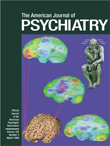Peter Elsass is professor of psychology at the University of Copenhagen. In writing this book, he worked with psychotherapists at the Rehabilitation Center for Torture Survivors in Copenhagen. He also had the opportunity to interview some of their patients.
The Rehabilitation Center for Torture Survivors was established in 1982 as a result of experiences in treating World War II Holocaust survivors. Dr. Elsass is the author of
Strategies for Survival: The Psychology of Cultural Resilience in Ethnic Minorities (1).
Treating Victims of Torture and Violence deals with a neglected area of psychiatry. Dr. Elsass has obviously done a great deal of work in this area and has thought a great deal about the topic. His book contains much useful and interesting information. It is a relatively short book that includes a preface, introduction, six chapters, and an extensive bibliography, which is not clearly related to the text. As an aid to the reader, Dr. Elsass includes a summary at the end of each chapter. The chapters consist of a general philosophical introduction, a chapter on diagnosis, a chapter on treatment, two chapters on cross-cultural issues, and a final chapter, “Postscript,” which includes a research study.
Despite a valiant effort, the book has serious flaws that limit its usefulness. It is not clear to what extent these are due to translation problems or to cultural differences between the author and his audience. In his preface, Dr. Elsass states that “this book is written for professionals and may therefore at times be difficult to understand for those without a psychotherapeutic background.” Unfortunately, even with a considerable psychotherapeutic background, I found this volume difficult to follow and understand.
The prose is often turgid and overly abstract. At times, terms familiar to the reader are overexplained (“supervision,” for example) and other, more esoteric terms (“the visitation”) are left unexplained. In addition, the book suffers from a lack of focus. It feels as if there are three separate topics that, although somewhat related, do not really mesh well: a philosophical discussion of issues of violence and torture, a clinical discussion of diagnosis and treatment, and, at the end, a research project.
The question of psychotherapeutic intervention across cultural barriers and the effects of translation in this process are discussed at length and are among the most clearly reasoned parts of this book. I am not at all clear, however, as to how the therapeutic process was carried out by Danish-speaking therapists with 12 Middle Eastern torture victims. One problem with the book is that the material often feels like a collection of disparate statements that do not blend well. This is compounded by the relative lack of direct clinical material. It is somewhat ironic that the victims are relatively silent in a book stressing the need to hear them. Without the clinical data, the ideas become overly abstract and almost clich�s.
In summary, although this book contains some interesting and important material, it has serious flaws that limit its usefulness. For those willing to undertake the effort, it can serve as a very general introduction, but it certainly is not (as claimed in the jacket) the definitive manual. It is hoped that Dr. Elsass, who clearly has things to contribute, will in the future develop his ideas more coherently and include more clinical material.

